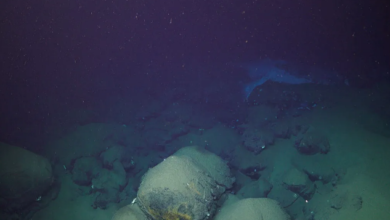“NASA Shocks the World: Sending HD Cat Video from Deep Space!

NASA made a groundbreaking announcement on Monday, revealing the successful use of an advanced laser communication system aboard a spacecraft positioned 19 million miles (31 million kilometers) away from Earth. The purpose? Transmitting a high-definition cat video.
NASA
The 15-second “meow-vie,” featuring an orange tabby named Taters, marked the first-ever streaming of a video from deep space. This achievement showcased the feasibility of transmitting high-data-rate communications essential for supporting complex missions, such as human expeditions to Mars.
The laser transceiver, integrated into the Psyche probe, was responsible for beaming the video to Earth. The Psyche probe is en route to the primary asteroid belt between Mars and Jupiter for an exploration mission focused on a mysterious metal-rich object. At the time of the video transmission, the spacecraft was an astonishing 80 times the distance from Earth to the Moon.
The encoded near-infrared signal reached the Hale Telescope at Caltech’s Palomar Observatory in San Diego County, and from there, it was relayed to NASA’s Jet Propulsion Laboratory (JPL) in Southern California.
Bill Klipstein, the project manager for the tech demo at JPL, explained, “One of the goals is to demonstrate the ability to transmit broadband video across millions of miles. Nothing on Psyche generates video data, so we usually send packets of randomly generated test data. But to make this significant event more memorable, we decided to work with designers at JPL to create a fun video, which captures the essence of the demo as part of the Psyche mission.”
Traditionally, space missions have relied on radio waves for data transmission. However, the use of lasers can significantly boost the data rate, increasing it by 10 to 100 times.
The ultra-HD video, transmitted at a maximum bit rate of 267 megabits per second, took 101 seconds to reach Earth—faster than most home broadband connections. Ryan Rogalin, the project’s receiver electronics lead at JPL, highlighted the remarkable speed by stating, “In fact, after receiving the video at Palomar, it was sent to JPL over the internet, and that connection was slower than the signal coming from deep space.”
Why a cat video? JPL emphasized the historical connection, referencing the 1920s when a statue of Felix the Cat served as a test image during the growth of American interest in television. Additionally, cats hold a prominent position in internet videos and meme culture.
The uploaded clip, featuring Tabby, the pet of a JPL employee, displayed the cat chasing a laser light on a couch, with overlay graphics illustrating Psyche’s orbital path and technical details about the laser and its data bit rate.
While laser transmission has been demonstrated in low Earth orbit and even to the Moon, the Psyche mission represents the first deployment of this technology in deep space. Overcoming the challenges of precise pointing and compensating for the movement of both the spacecraft and Earth during the signal’s travel time were significant technical accomplishments for the engineering teams involved.




